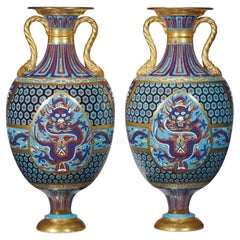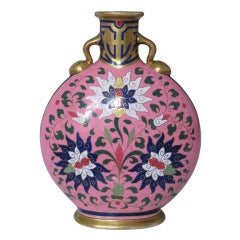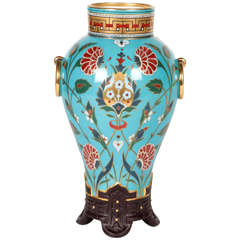Minton Cloisonne
Antique Late 19th Century British Chinoiserie Vases
Porcelain
Recent Sales
20th Century Barware
Porcelain
Antique 19th Century British Aesthetic Movement Vases
Porcelain
Antique 1870s English Aesthetic Movement Porcelain
Porcelain
Antique 19th Century English Vases
Porcelain
People Also Browsed
20th Century American Art Nouveau Table Lamps
Bronze
Antique Early 18th Century French Baroque Western European Rugs
Wool, Silk
Vintage 1910s American Art Nouveau Table Lamps
Bronze
Early 20th Century American Art Nouveau Vases
Glass
Early 20th Century Chinese Qing Ceramics
Ceramic
Antique 19th Century French Renaissance Revival Mantel Clocks
Enamel, Ormolu
1990s English Decorative Boxes
Gold
Mid-20th Century English Art Deco Busts
Plaster
Antique 19th Century English Dinner Plates
Paste, Porcelain
Antique 19th Century English Aesthetic Movement Dinner Plates
Porcelain, Paste
Antique 1860s English Neoclassical Porcelain
Porcelain
Antique 19th Century French Neoclassical Mantel Clocks
Statuary Marble, Bronze
Antique 1880s English Vases
Porcelain
Antique 19th Century French Clocks
Antique Early 1900s English Arts and Crafts Centerpieces
Copper
Antique Late 18th Century French Louis XVI Mantel Clocks
Marble, Bronze
Minton for sale on 1stDibs
Pottery is one of the oldest decorative art forms, and Minton is one of its historical masters. For more than 250 years, the English company was a premier producer of porcelain and ceramic wares. Its factory was known for detailed and brightly colored Victorian tableware, including dinner plates and serving pieces.
Thomas Minton founded the Minton factory in 1793 in Stoke-upon-Trent, England. It initially made earthenware but introduced bone china in 1798. When Minton died in 1836, the company passed to his son, Herbert Minton. The younger Minton was a savvy businessman with an eye for design. He introduced glossy majolica earthenware to the factory’s repertoire and hired skilled artists and designers like Augustus Welby Northmore Pugin and Albert-Ernest Carrier-Belleuse, boosting the company’s reputation.
In 1851, Minton debuted its majolica at the Great Exhibition in London. It became a royal family favorite and was even used to tile the Royal Dairy at Windsor Home Park. Minton majolica was also displayed on the monumental Saint George and the dragon fountain at the 1862 London International Exhibition.
Colin Minton Campbell, a nephew of Herbert Minton, took over the family business in 1858. He led the company to the head of the 1870s English art pottery movement. In the 1890s, French porcelain artist Marc-Louis Solon helped modernize Minton with his Art Nouveau designs.
Minton ceased operating as an independent company when it merged with Royal Doulton Tableware Ltd. in 1968. It was the end of an era, but not the end of widespread appreciation for Minton ceramics.
In 1982, the ”English Majolica” exhibition at the Cooper Hewitt, Smithsonian Design Museum featured 75 Minton pieces. When the Metropolitan Museum of Art reopened its British Galleries in 2020, it included a display of three colorful Minton majolica bird sculptures. Minton pottery was also on display from September 2021 to January 2022, along with other English pottery, at the Bard Graduate Center’s ”Majolica Mania” exhibition.
On 1stDibs, find exquisite Minton serveware, decorative objects, wall decorations and more.


